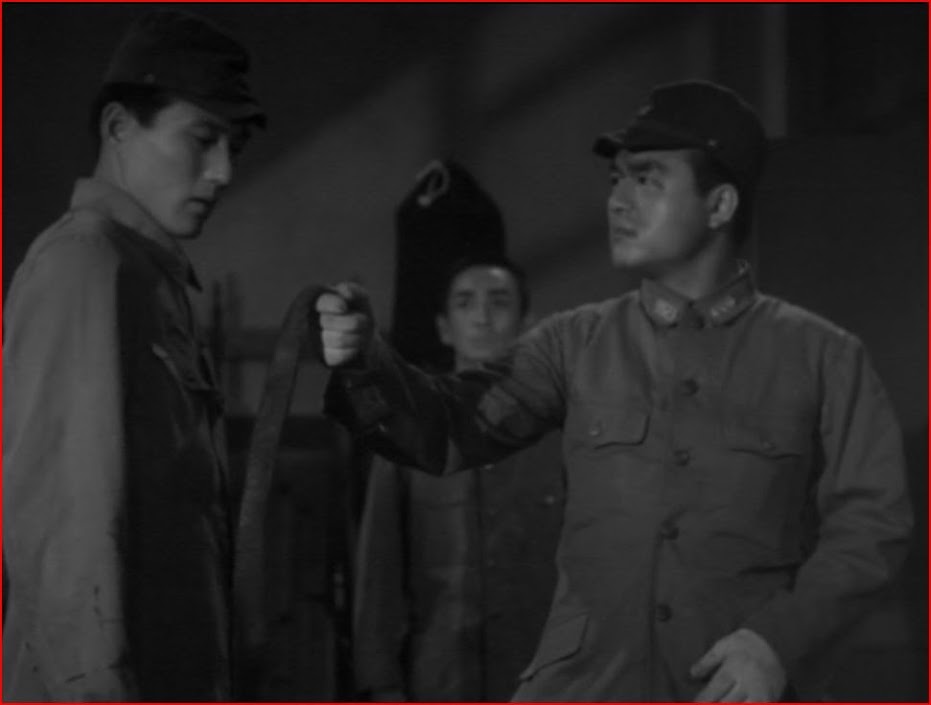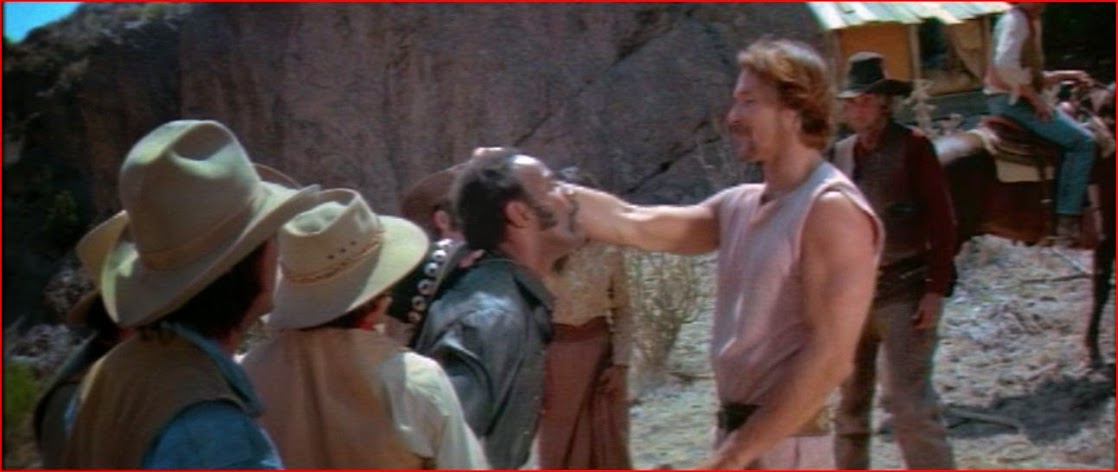 Jimmy Cagney doesn't show up until about 24 minutes into this Archie Mayo picture; until then, it's a Frankie Darro movie. In 1933 the teenaged acting veteran -- he'd been working since 1924 -- got the nearest thing to a big-studio push he'd ever get. Darro would make his biggest mark on Hollywood history later the same year, and also for Warner Bros., in William Wellman's Wild Boys of the Road, though for some audiences he may be best known for his role in the one-of-a-kind Gene Autry sci-fi serial The Phantom Empire from 1935. In 1933 Darro seemed to symbolize youth on the precipice during the Great Depression, a kid whose relatively small stature represented an endangered innocence disguised by a wishful toughness.
Jimmy Cagney doesn't show up until about 24 minutes into this Archie Mayo picture; until then, it's a Frankie Darro movie. In 1933 the teenaged acting veteran -- he'd been working since 1924 -- got the nearest thing to a big-studio push he'd ever get. Darro would make his biggest mark on Hollywood history later the same year, and also for Warner Bros., in William Wellman's Wild Boys of the Road, though for some audiences he may be best known for his role in the one-of-a-kind Gene Autry sci-fi serial The Phantom Empire from 1935. In 1933 Darro seemed to symbolize youth on the precipice during the Great Depression, a kid whose relatively small stature represented an endangered innocence disguised by a wishful toughness. In Mayor of Hell Darro plays Jimmy, the leader of a small, impeccably multicultural street gang. A presumptive WASP, Jimmy consorts easily with Italian, Jewish and black kids -- the last played by Allen Hoskins under his Our Gang name, "Farina." They're petty thieves and extortionists, offering to watch your car for a quarter and vandalizing it if you refuse. They all seem to suffer from inadequate if not absent fathers -- Warners stalwart Robert Barrat appears all-too-briefly as Jimmy's mysteriously bitter dad during a protracted juvenile-court scene (Arthur Byron presiding) after the gang is pinched. Byron nudges the parents into consigning their kids to reform school, apparently not knowing the horror to which he's condemned them.

Jimmy (Frankie Darrow, on the ground above left) blames his dad (Robert Barrat, below center) for his abrupt decline from honor student to juvenile delinquent.

This particular reformatory is run by Thompson (Dudley Digges), a petty tyrant who seems interested only in putting the kids to work. Conditions prove unbearable for Jimmy, who takes advantage of the confusion created by the abrupt arrival of a new deputy state commissioner to attempt an escape. Patsy Gargan (Cagney) is a political appointee, a "ward-heeler" who controls 5,000 votes and wants an undemanding sinecure as compensation. He's breezily indifferent to the responsibilities of his office, expecting Thompson to write his reports for him, until he witnesses Jimmy's escape attempt. The lad doesn't get very far, ending up stuck on a barbed-wire fence as Thompson flogs him until he falls off. Something stirs in Gargan at the sight. Something else stirs when he meets the pretty, conscientious head nurse (Madge Evans), who has progressive theories on reforming delinquent youth. Resenting an inferred slight at his own background when Thompson condemns the kids as slum scum, Patsy resolves to be a hands-on commissioner, implementing many of Nurse Dorothy's ideas, if only at first to remain near her.

Thompson (Dudley Digges) turns squeamish at the thought of drinking from Patsy Gargan's flask, but relishes his work flogging Jimmy.

Dorothy has been reading up on the "boy's republic" idea, already implemented in real life in several states, in which troubled boys build character through self-government. Deposing Thompson and driving out his old guard, Patsy turns the reform school into a model boy's republic, with Jimmy its unlikely president. The boys run their own legal system on egalitarian principles; Farina is seen acting as a defense attorney when a white boy is accused of stealing a candy bar from the new store -- run stereotypically by one of the Jewish kids. The boys eat well and sport snappy new uniforms. But Patsy's past catches up with him as he returns to the city to put down an uprising in his political organization. When the dispute turns into a gunfight, Patsy has to go on the lam, opening the door for the vindictive Thompson to reassert his authority.

Allen Jenkins (above, left) doesn't get enough to do as Cagney's stooge. Cagney gets plenty, of course.

Things grow worse than ever as Thompson forces Dorothy out and cracks down on the most spirited kids, i.e. Jimmy's crew. When a tubercular pal dies after being left in a cold punishment shed overnight, Jimmy is ready for war. Mayor of Hell becomes a characteristic film of its period in its imagination of an apocalyptic uprising as the kids take over the reformatory and subject Thompson to a kangaroo court trial. His escape attempt is as futile as Jimmy's earlier effort, but ends more gruesomely. Driven by the flames of a burning building, Thompson falls off a roof, bounces off the barbed-wire fence and lands ignominiously in a pig pen, where one can imagine what the pigs do with him. When Patsy, rediscovering his responsibility to the boys, arrives to calm the crisis, there's a long moment of tension when it seems possible that the enraged boys may turn on both Patsy and Dorothy, both of whom they assume to have abandoned them to Thompson's tender mercies. But movies allow us to eat our cake and have it too, to imagine the insurrection many in 1933 felt was just around the corner but also to reassure themselves that we can all step back at the urging of a voice of reason, to ensure a happy ending. Mayor of Hell has it both ways, ultimately coming out in favor of law, order and peace but pretty much condoning the hounding of Thompson to his death as an act of justice.


By the time Cagney finally shows up, you get the impression that he's been grafted onto what may have been first imagined as a self-sufficient social-problem film, as Wild Boys of the Road would be. While Cagney gives a fine, charismatic performance, his character's improbably evolution into an idealist may be the weakest part of the film. The boys certainly need a sympathetic friend in a high place like Patsy Gargan, but after the first 20 minutes you get the feeling that Darro, Hoskins et al could have carried this picture by themselves without help from a star as big as Cagney. Strange to say, the star's overpowering presence probably prevents Mayor of Hell from being the kind of definitive Depression document that Wild Boys has become in retrospect. Even so, it captures a bit of the dangerous zeitgeist of 1933 in entertaining fashion.
If it's a Warner Bros. picture, TCM.com has the trailer.








































 W
W





